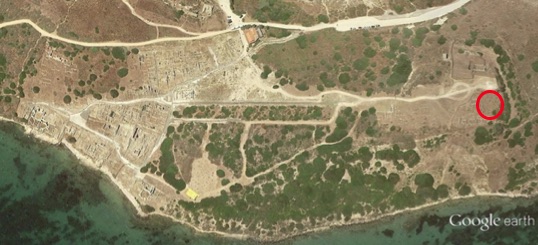The Nuragic settlement
The Su Muru Mannu hill, that dominates the north of the Tharros site, was home to a Nuragic village at the top (fig. 1).

Excavations have shown that in the 7th century B.C., the Phoenician-Punic tophet was built on some huts of a Nuragic Age settlement, of which some huts have been found (figs. 2-5)




These huts, of which only the base row of the elevation remains, were built in the Bronze Age, between 1600 and 1500 B.C., whereas we do not known with certainty how long the village lasted, as the tophet construction brought about the loss of the last levels of life. The ceramics found on the site, however, show that the village must have been inhabited until at least the 8th century B.C., thus making it one of the central points for the meeting between the Phoenicians and the local communities.
Bibliografia
- V. SANTONI, Il villaggio nuragico di Tharros. Campagna 1977, in Rivista di Studi Fenici, IV, 1977, pp. 81-96.
- V. SANTONI, Tharros XI – Il villaggio nuragico di Su Muru Mannu, in Rivista di Studi Fenici, XIII, 1985, pp. 33-140.

 VR
VR